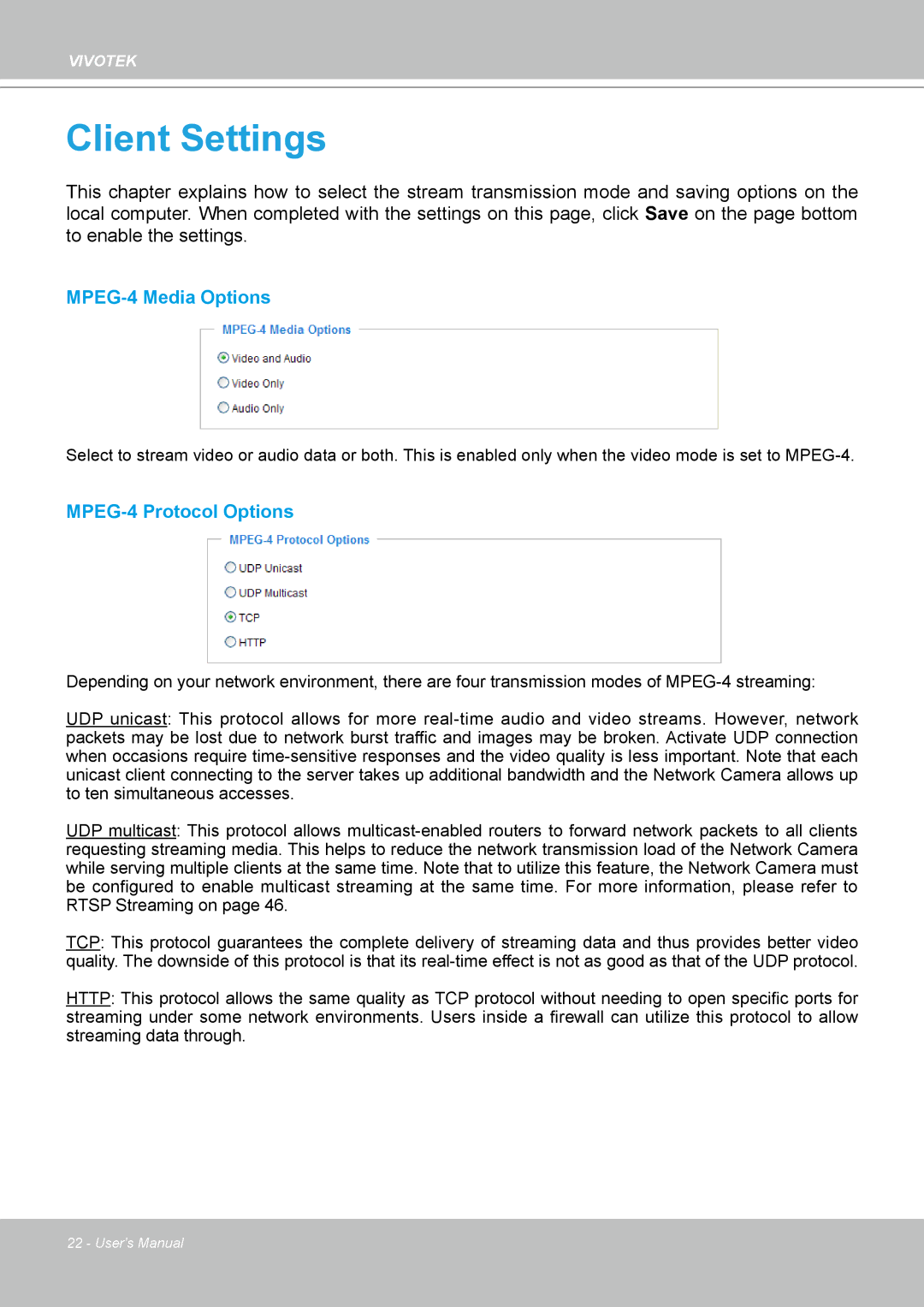
VIVOTEK
Client Settings
This chapter explains how to select the stream transmission mode and saving options on the local computer� When completed with the settings on this page, click Save on the page bottom to enable the settings�
MPEG-4 Media Options
Select to stream video or audio data or both� This is enabled only when the video mode is set to
MPEG-4 Protocol Options
Depending on your network environment, there are four transmission modes of
UDP unicast: This protocol allows for more
UDP multicast: This protocol allows
TCP: This protocol guarantees the complete delivery of streaming data and thus provides better video quality� The downside of this protocol is that its
HTTP: This protocol allows the same quality as TCP protocol without needing to open specific ports for streaming under some network environments� Users inside a firewall can utilize this protocol to allow streaming data through�
22 - User's Manual
